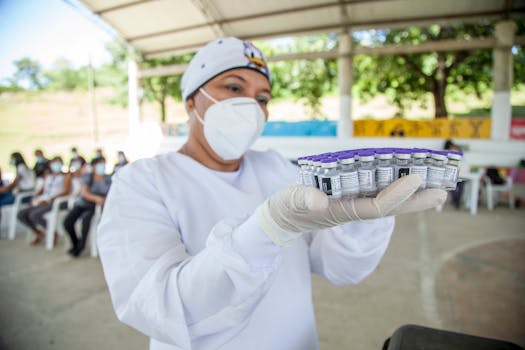
The Science Behind Vaccines

Vaccines are one of the most significant advancements in public health, designed to prevent infectious diseases by stimulating the immune system. The focus keyword, ‘vaccines,’ plays a crucial role in understanding how they function and their importance in safeguarding public health. This article delves into the science behind vaccines, their development, and their impact on society.
How Vaccines Work

Vaccines work by mimicking an infection. When a vaccine is administered, it introduces a harmless component of a pathogen, such as a protein or a piece of its genetic material, into the body. This exposure prompts the immune system to respond by producing antibodies. Should the body encounter the actual pathogen in the future, the immune system recognizes it and mounts a defense, preventing illness.
Types of Vaccines

There are several types of vaccines, including:
- Live-attenuated vaccines: These contain weakened forms of the virus or bacteria.
- Inactivated vaccines: These contain killed pathogens.
- Subunit, recombinant, and conjugate vaccines: These contain pieces of the pathogen, such as proteins or sugars.
- Messenger RNA (mRNA) vaccines: These provide instructions for cells to produce a harmless piece of the pathogen, triggering an immune response.
The Role of Vaccines in Public Health

Vaccines have played a pivotal role in public health by significantly reducing the prevalence of infectious diseases. For example, the introduction of the polio vaccine virtually eradicated the disease in many parts of the world. Vaccines not only protect individuals but also contribute to herd immunity, where a significant portion of the population is immunized, thereby reducing the overall spread of disease.
Challenges and Misconceptions

Despite the proven benefits of vaccines, misinformation and skepticism persist. Common misconceptions include the belief that vaccines cause autism or that natural infection is better than vaccination. Scientific research has consistently debunked these myths, establishing that vaccines are safe and effective.
Conclusion

In conclusion, the science behind vaccines is a testament to human ingenuity and a critical component of public health strategies. Understanding how vaccines work and their impact on community health is essential in combating misinformation and promoting vaccination. By continuing to support vaccine development and distribution, we can safeguard future generations from preventable diseases.





